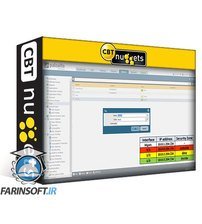در حال حاضر محصولی در سبد خرید شما وجود ندارد.

This intermediate Palo Alto PCNSE training prepares learners to take the PCNSE exam, which is the one required exam to earn the Palo Alto Networks Certified Network Security Engineer (PCNSE) certification.
The Palo Alto Certified Network Security Engineer (PCNSE) is Palo Alto’s highest level of certification for security professionals working on Palo Alto’s Security Operating Platform. Best attempted with years of experience, the certification requires deep knowledge of designing, deploying, configuring, maintaining and troubleshooting nearly all Palo Alto platform implementations. When an organization needs a next-generation firewall deployed while maintaining the access and availability of the rest of their platform, they need a PCNSE. Security professionals aren’t the only ones who can benefit from this training, though: customers, partners, systems engineers, systems integrators and support engineers can all benefit from understanding how the proper maintenance of firewalls affects the entire network.
در این روش نیاز به افزودن محصول به سبد خرید و تکمیل اطلاعات نیست و شما پس از وارد کردن ایمیل خود و طی کردن مراحل پرداخت لینک های دریافت محصولات را در ایمیل خود دریافت خواهید کرد.


فیلم یادگیری Getting Started with Palo Alto Firewalls v8.x

بازرسی محتوا در فایروال های FortiGate

CompTIA Network+ (N10-008) Certification Training

Fortinet NSE 7 Enterprise Firewall Online Training

Fortinet NSE 6 – Secure Wireless LAN Online Training

PCNSA Online Training
-main-resized.jpg)
کورس مدیریت امنیت شبکه های Palo Alto : مدرک PCNSA

فیلم یادگیری Networking and IP Addressing Fundamentals

یادگیری کامل Fortinet NSE 4
--Configure-and-Verify-IPv4-NATPAT-main-resized.jpg)
آموزش کامل 350-401 ENCOR : پیکربندی و تست صحت IPv4 NAT/PAT
✨ تا ۷۰% تخفیف با شارژ کیف پول 🎁
مشاهده پلن ها